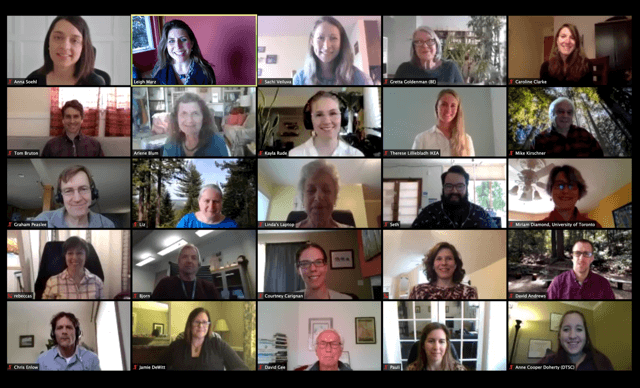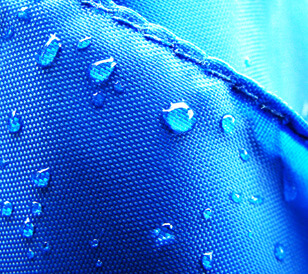Our Accomplishments
“Green Science Policy deserves a lot of credit for bad laws not happening.”–Joan Blades, Founder of MoveOn.org
2023
- We helped lead The No Toxics Tent Act legislation in California so that camping and children’s play tents no longer need harmful flame retardants.
- Following on from our 2018 Hill work leading to legislation allowing U.S. commercial airports to use PFAS-free firefighting foams, the Federal Aviation Administration finally began to allow foam without PFAS.
- We led impactful peer-reviewed papers on: the harm and overuse of quaternary ammonium compounds, (QACs); the essential-use approach for regulating harmful chemicals; and the limited effectiveness of PFAS in increasing the stain repellency of upholstery fabrics
- Our map of peer-reviewed wildlife studies found flame retardants in more than 150 species worldwide.
- Our op-eds about the Ohio train derailment and the harms of vinyl chloride were published in the New York Times, the Los Angeles Times. and introduced into the congressional record.
2022
- Our joint papers on PFAS in cosmetics and in children’s uniforms and our San Francisco Chronicle op-ed contributed to California passing legislation to phase out PFAS in textiles and personal care products.
- A decade after our Institute and colleagues began promoting the class concept, the European Commission announced their restrictions roadmap towards banning all flame retardants, all PFAS, and all bisphenols
- We published a joint analysis finding that state and federal public health agencies often understate the scientific evidence documenting PFAS harms.
- The EPA proposed designating PFOA and PFOS as hazardous chemicals two years after our Institute joined community leaders and the UC Berkeley Environmental Law Clinic in petitioning the EPA to list hundreds of PFAS as hazardous wastes.
2021
- Our PFAS in cosmetics paper was covered by CNN, AP, Good Morning America. It inspired the bipartisan No PFAS in Cosmetics Acts in the House & Senate and awoke the industry to the problem. Best of all, cosmetics companies are removing all PFAS from their products.
- Our Institute's collaborative paper about PFAS in cosmetics has been read more than 80,000 times. Indeed, we co-authored five of the twenty most read articles for 2021 in the high impact journal ES&T Letters.
- John Oliver called out the necessity of managing PFAS as a class and shared our paper on Last Week Tonight. (I was an advisor on PFAS for the program.) PFAS was also featured on The Daily Show.
- Our August Op-ed in the New York Times connected climate change, plastics pollution, & toxic chemicals. All are caused by the petrochemical industry and are best prevented together.
- We shared our innovative and very successful science communications strategy in Nature and workshops for scientists worldwide. You can learn our strategy for high impact scientific papers on our new communications page.
2020

- Our collaborative PFAS as a class paper is the most read article in ES&T Letters. The class-based approach is being adopted by businesses and governments worldwide to protect our health from toxics.
- Due to the COVID-19 pandemic we successfully held our meetings and a press conference virtually reaching many hundreds of people.
- Along with our partners at the UC Berkeley Environmental Law Clinic and community groups, we petitioned the U.S. EPA to list hundreds of PFAS as hazardous wastes.
2019
- Launched PFASCentral.org, a site for the latest PFAS news, science, policy and events. We carefully curate information on PFAS for this useful digest.
- Our PFAS-free page lists products without intentional PFAS use.
- Motivated changes to the California Building Code that will allow the use of flame retardant-free polystyrene foam insulation below grade. This code change process began with our 2012 peer-reviewed scientific paper demonstrating the health harm and lack of fire safety benefit of flame retardants in this application.
- Provided educational workshops to leading carpet companies which catalyzed their phaseout of PFAS.
2018

- Contributed to bipartisan legislation to allow U.S. airports to use firefighting foams without PFAS. This will help prevent drinking water contamination in surrounding communities.
- Our Executive Director, Arlene Blum, was inducted into the California Hall of Fame by Governor Jerry Brown, for her contributions to mountaineering and science.
- Received congressional proclamation from Rep. Dan Kildee (MI-5) recognizing our work on reducing the use of toxic chemicals.
- Celebrated a decade of Big Ideas.
2017

- Our landmark “Big Idea” petition to the Consumer Product Safety Commission was approved. This petition bans children’s products, furniture, mattresses, and electronics cases that contain organohalogen flame retardants.
- We launched the Six Classes video series and our www.sixclasses.org website. These compelling short videos educate decision makers and consumers about avoiding classes of chemicals that harm human health and the environment.
- We co-authored a paper on fluorinated chemicals in fast food packaging that received the third-highest media impact score in ES&T Letters. Major fast food and packaging companies are stopping the use of PFAS in response to this paper and our workshop.
- Our joint scientist’s letter (with 37 scientists) calling for coordinated health studies in communities with PFAS-contaminated drinking water was published in the journal Environmental Health. Provisions from the letter are in the 2018 U.S. National Defense Authorization Act.
2016

- Developed The Florence Statement on Triclosan and Triclocarban, a scientific consensus statement on the health and environmental harm and lack of proven benefit of these antimicrobials.
- Arlene Blum’s editorial “Tackling Toxics” was published in Science.
- Co-authored paper on PFAS in drinking water finding that water serving 6 million Americans exceeded the EPA’s health advisory. This paper has been viewed tens of thousands of times and received the second-highest media impact score in ES&T Letters.
2015

- Helped prevent six proposed international standards that would have led to the unnecessary use of hundreds of millions of pounds of flame retardants in electronics enclosures.
- Began facilitating monthly meetings of the Material Buyers Club, a group of leading organizations that share information on procurement of healthier products and building materials.
2014

- Co-authored The Madrid Statement, a scientific consensus statement on actions to reduce the use of PFAS. Signed by more than 200 scientists from 37 countries, this statement brought knowledge of the PFAS problem to an international audience.
- Our Responsible Furniture Disposal Project brought experts together to develop solutions for the sustainable disposal of tens of millions of toxic sofas in American homes. Our Safer Sofa Foam Exchange Program made the front page of the San Francisco Chronicle.
- Our original webinars about classes of harmful chemicals in consumer products contributed to large retailers and manufacturers reducing the use of these chemicals.
2013
- After years of science and advocacy by the Institute and our colleagues, California’s flammability standards were updated to TB 117-2013, which increases fire safety of furniture and children’s products without the need for flame retardant chemicals.
- We began our monthly PFAS Science and Policy calls with leading PFAS scientists worldwide.
2012
- Our paper with Duke University scientists detected harmful flame retardants in 85% of 100 couches tested and raised awareness of this serious health problem.
- Our joint paper Flame retardants in building insulation: a case for re-evaluating building codes initiated our work to stop the use of harmful and unneeded flame retardants in building insulation.
2011
- Our study with Dr. Heather Stapleton found that 80% of children's products tested contained flame retardants. This study, Environmental Science & Technology’s top paper of 2011, contributed to California’s exempting most baby products from flammability standards.
- Our research on flame retardants contributed to the listing of chlorinated Tris as a California Proposition 65 carcinogen.
2010
- We co-led the development of the San Antonio Statement on Brominated and Chlorinated Flame Retardants. This consensus statement, signed by over 200 experts from 30 countries, details research documenting the health harm and lack of fire safety benefit from flame retardants.
- Based in part on our education campaign, the U.S. Green Building Council began giving a LEED Pilot Credit 11 for not using halogenated flame retardants and phthalates inside buildings.
2009
- We helped suspend a proposed flammability requirement, California Technical Bulletin 604, that would have led to retardants in pillows, comforters, and mattress toppers.
2008
- We contributed to a draft federal Consumer Product Safety Commission standard to increase furniture fire safety without flame retardants.
- Our science and policy work helped prevent five international standards that would have led to approximately 1.7 billion pounds of unneeded flame retardants in consumer electronics cases each year.
2007
- Our scientific education contributed to Illinois, Pennsylvania, and New York State not enacting ineffective requirements for flame retardants in furniture.
- We began our annual public symposia that bring together stakeholders from government, industry, academia, and nonprofit groups to learn about reducing the use of toxic chemicals.
